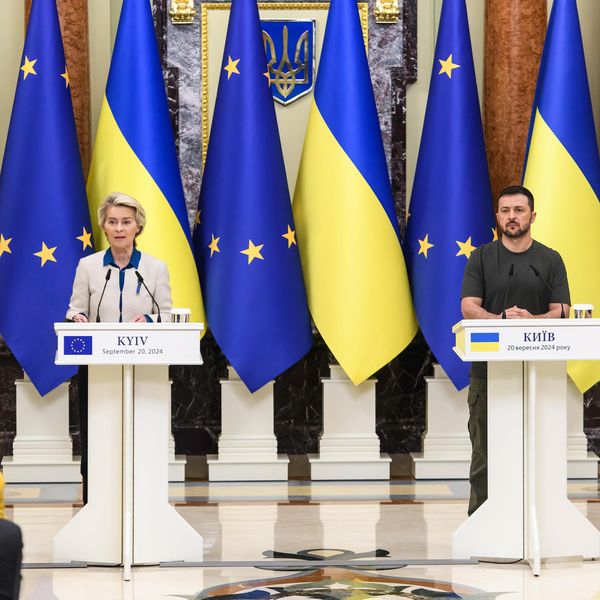Once again, Congress is facing a tight deadline to keep the government open. Just a few days remain before the current short-term Continuing Resolution, which temporarily extends the FY2022 budget into FY2023, runs out on Dec 16.
With talks between Democrats and Republicans on the now-overdue FY2023 budget agreement ongoing, congressional leadership and the House and Senate Appropriations Committees are once again looking for a way forward on a diverse pool of funding priorities. These priorities include several contentious matters, such as funding for reproductive healthcare, the Border Wall, and Guantánamo Bay.
But there’s one funding priority that should not be controversial: peacebuilding and conflict prevention.
We know that peacebuilding and conflict prevention reduce violent conflict and human suffering while saving taxpayer dollars. However, U.S. support for this work has been persistently underfunded.
Too often, the United States responds to conflicts only after violence and forced displacement have begun, waiting until the fallout is too great to ignore. By this point, the consequences of violent conflict and war are well underway, including the direct loss of life and human suffering, mass displacement, the growth of non-state armed groups and criminal networks, the destruction of communities and infrastructure, and harm to the environment.
These costs don’t just come at a moral and social price, but at an economic one, too. In fact, the Institute of Economics and Peace found that in 2021, before the war in Ukraine began, the global economic impact of violence, including armed conflict and military expenditure, was $16.5 trillion in purchasing power parity terms, or roughly 10 percent of global GDP.
Additionally, according to the United Nations Office for the Coordination of Humanitarian Affairs 2023 Global Humanitarian Overview, the most expensive humanitarian appeals have been prompted by war. These include humanitarian crises in Afghanistan, Syria, Yemen, Ukraine and Ethiopia, amounting to tens of billions of dollars in vitally needed humanitarian aid.
Waiting to respond to violent conflict leaves the United States with fewer, less effective, and more expensive foreign policy tools available. Rather than investing in conflict prevention, the United States all too often relies instead on militarized crisis management and costly humanitarian aid. These tactics act like band-aids and fail to resolve the underlying drivers of conflict and violence.
But Congress remains stuck in an endless cycle of funding these militarized crisis-response tools, rather than investing in peacebuilding and conflict prevention.
While Congressional appropriators have made steady, if somewhat meager, increases in funding for peacebuilding and conflict prevention over the last several years in the State, Foreign Operations and Related Programs (SFOPs) Appropriations bills, these increases pale in comparison to the growth of defense appropriations.
From FY2014 to FY2022, the Defense Appropriations bill increased by about $163 billion, reaching a staggering $728.5 billion in FY22. Meanwhile SFOPs appropriations grew by just $35 billion over the same period, reaching $85.4 billion in FY22. Importantly, of that $85.4 billion, 33 percent was emergency one-off funding for the war in Ukraine and COVID-19. Only about 4.5 percent was specifically focused on peacebuilding and conflict prevention.
To put it in more straightforwardly last year, Congress appropriated the equivalent of just half of one percent of the Pentagon budget to peacebuilding and non-violent conflict prevention.
The ongoing budget negotiations are a chance to address this discrepancy. Specifically, Congress should retain text from the Senate SFOPs appropriations bill (S. 4662) that provides $6 million for Atrocities Prevention (Sec. 7034 (c)). This vital funding would allow the Department of State to support efforts to prevent genocide and mass atrocities around the world and implement the Elie Wiesel Genocide and Atrocities Prevention Act (P.L. 115-441).
Additionally, congressional negotiators should retain the Senate’s inclusion of funding for Atrocity Prevention training at both USAID and the State Department to help American diplomats and development professionals identify and respond to the early warning signs of mass atrocities.
Congress would also be wise to retain language from the House SFOPs appropriations bill (H.R. 8282) that would provide $150 million for the Prevention and Stabilization Fund (Sec. 7066 (a)). This fund offers critical resources to implement the Global Fragility Act (P.L 116-94), which aims to reduce and address the drivers of conflict and fragility, and to promote accountability for mass atrocities, crimes against humanity, and war crimes.
Lastly, Congress should include the House’s $30 million for Reconciliation Programs, which aims to bring together individuals of different groups and backgrounds in areas of civil strife and war to strengthen inter-community relationships and uproot seeds of conflict.
Promoting peacebuilding and preventing violent conflict is a moral, financial, and strategic imperative. As Congress works to finalize appropriations for FY23, it must seize this opportunity to begin breaking the costly cycles of conflict response by investing in these essential programs instead of waiting until it’s too late.
















